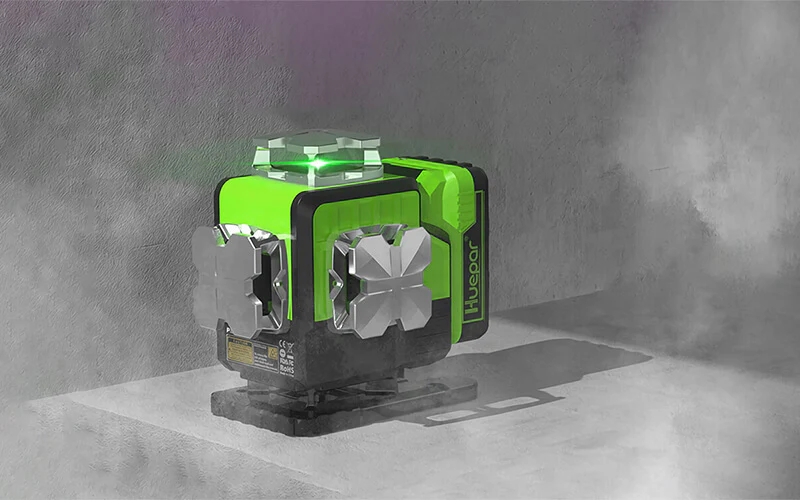
Unveiling the Precision of 3D Laser Levels: Your Comprehensive Guide
March 12, 2024
Understanding 3D Laser Levels
What Are 3D Laser Levels?
3d laser levels are high-tech tools used in construction. They project three intersecting laser lines. These lines form a 3D cross on a surface. This helps to align and place objects with precision. They are handy for tasks like tiling and framing. Professionals use them for their accuracy and ease of use. Even DIY enthusiasts find 3D laser levels useful. They make complex layouts easier to manage.
How Do 3D Laser Levels Work?
3d laser levels project lines at 360 degrees. This lets you map out a full room without moving the tool. They use diodes to cast horizontal and vertical lines. These lines intersect, showing where things line up. A self-leveling feature helps get accurate lines. This kicks in when the tool is slightly off level. You see real-time adjustments for precision. Bright lasers make the lines easy to spot, even in daylight. With this tech, workers can set up layouts quickly and move on faster.
The Benefits of Using 3D Laser Levels in Construction
3d laser levels bring a host of advantages to the construction scene. They level and align with supreme accuracy, saving time and reducing errors. This precision is vital in tasks such as installing cabinets, framing walls, and laying pipes. Their ability to project a 360-degree plane allows workers to see guidelines from every angle. This means less need for manual checks. The benefits of using 3D laser levels in construction include:
- Increased Accuracy: Ensures straight lines and perfect angles, enhancing the quality of the build.
- Efficiency: Speeds up the process as it eliminates the need for constant re-measuring.
- Ease of Use: Simplifies tasks for workers, reducing the learning curve.
- Versatility: Suitable for a range of applications, from indoor fittings to outdoor masonry.
- Saves Money: Reduces wasted materials and time, leading to cost savings on the project.
In essence, the use of 3d laser levels is an investment in excellence and efficiency that pays dividends on construction projects of any size.
Cross Line Laser Level vs. 3D Laser Levels
What Is a Cross Line Laser Level?
A Cross Line Laser Level is a tool that emits visible straight lines onto a surface. This type of laser level projects two lines: one horizontal and one vertical, forming a cross. These lines help guide tasks like hanging pictures, tiling, and installing cabinetry. Simple to use, they are ideal for indoor DIY projects. The lines can be easily seen, making alignment and leveling straightforward.
Key Differences Between Cross Line and 3D Laser Levels
Cross line and 3d laser levels serve different needs. Here are key differences:
- Beam Projection: Cross line lasers project one or two lines intersecting at a 90-degree angle. 3D lasers offer one horizontal and two vertical lines, creating a full 360-degree layout.
- Coverage Area: 3D laser levels cover all walls, floor, and ceiling with precise alignment lines. Cross line lasers are best for simpler tasks like hanging pictures or tiling.
- Precision and Versatility: 3D laser levels provide higher precision for complex projects. Cross line models are less versatile but great for straightforward tasks.
- Price Point: Generally, 3D laser levels are more expensive due to their advanced features and broader applications.
Choosing between them depends on your project’s complexity and precision needs.
Choosing the Right Laser Level for Your Project
Choosing the right laser level is key to project success. Here are tips to pick the best one:
- Assess the project size. Is it large or small?
- Think of your needs. Do you need vertical, horizontal, or both types of lines?
- Check the working range. Make sure it covers your site.
- Look for durability features. A good level must withstand a tough environment.
- Compare accuracy specs. For precision work, get the most accurate tool.
- Think about ease of use. It should be simple to set up and operate.
- Consider battery life. Longer life means less downtime.
Whether you choose a cross line or a 3D laser level, make sure it fits the job’s needs.
Advancing to 4D Laser Levels
Introducing 4D Laser Levels
4D Laser Levels take the capabilities of 3D models further. They offer a new level of control in laser leveling. With these tools, users can project lines along the X, Y, and Z axes. They also add the element of height control. This means you can adjust the beam’s elevation with precision. 4D lasers are ideal for complex projects. They require detailed alignment and spatial planning. From construction to interior design, they offer enhanced features. These tools can lead to better outcomes in professional tasks.
The Additional Dimension: What Sets 4D Apart from 3D?
4D laser levels take precision to the next level by adding an extra plane. While 3D levels project X, Y, and Z-axis lines, 4D models include a 360-degree horizontal line. This extra line wraps completely around a room or space. It allows for full coverage without moving the tool. This is key for complex jobs needing detailed work in every direction. The upgrade makes aligning objects in a full space quicker and more precise. It’s ideal when high accuracy is vital.
When to Consider Upgrading to a 4D Laser Level
Upgrading to a 4D laser level is worth considering when:
- Your projects demand extreme accuracy.
- You need full-room coverage without moving the device.
- You work on complex sites with multiple planes.
- Speed is vital and setup times need to be minimal.
- You are looking to invest in the latest tech to stay competitive.
Choosing a 4D laser level can lead to more precise results and efficient work flow.

